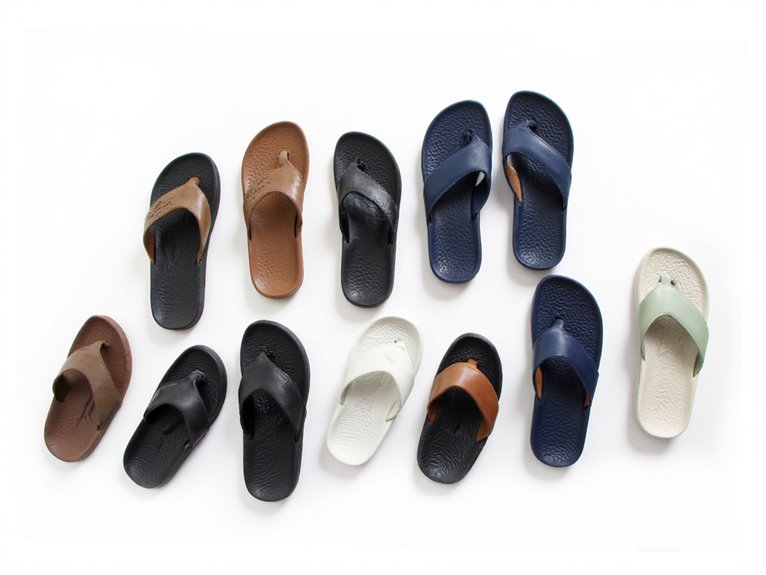Are Self-Inflating Mats Any Good?
Self-inflating mats have earned a reputation as a superior choice for campers and outdoor enthusiasts, providing unparalleled comfort and support by combining the benefits of open-cell foam and airtight membranes to create a sleeping solution that is both convenient and indulgent. By automatically inflating when unrolled, these mats offer superior cushioning and insulation, conforming to individual body shapes and weights to reduce discomfort and stiffness. With their ease of setup, durability, and reliable performance, self-inflating mats have become a staple for many campers – and there's more to discover in the pursuit of finding the perfect mat for your next adventure.
We are supported by our audience. When you purchase through links on our site, we may earn an affiliate commission, at no extra cost for you. Learn more. Last update on 28th December 2025 / Images from Amazon Product Advertising API.
What Are Self-Inflating Mats
Self-inflating mats are a type of sleeping pad designed to provide superior comfort and support for campers, backpackers, and outdoor enthusiasts, utilizing a unique combination of open-cell foam and airtight membranes to inflate automatically when unrolled.
This innovative design allows for effortless setup, eliminating the need for manual inflation.
The open-cell foam core provides excellent cushioning and insulation, while the airtight membrane guarantees the mat remains inflated throughout the night.
Self-inflating mats are ideal for those seeking a comfortable and convenient sleeping solution for their outdoor adventures.
They are available in various thicknesses and sizes, catering to different comfort preferences and backpacking needs.
How Do They Inflate
As the mat is unrolled, the internal open-cell foam structure responds to the change in pressure, allowing air to rush in and fill the voids, thereby inflating the mat to its ideal firmness.
This process occurs due to the unique properties of the foam, which is designed to expand and contract in response to pressure changes.
Pressure change: The mat is unrolled, creating a pressure difference between the inside and outside of the foam.
Air flow: Air rushes into the foam to equalize the pressure, filling the open cells.
Foam expansion: The foam expands as air fills the cells, increasing the mat's thickness and firmness.
Equilibrium: The mat reaches its ideal firmness as the pressure inside and outside the foam equalizes.
Comfort and Support Claims
The unique ability of self-inflating mats to conform to the body's shape and provide ideal support is a key factor in their ability to deliver a restful night's sleep, making them an attractive option for outdoor enthusiasts and travelers alike.
This adaptability is made possible by the open-cell foam interior, which allows the mat to adjust to individual body shapes and weights.
As a result, self-inflating mats are able to provide excellent support and pressure relief, reducing the likelihood of discomfort and stiffness.
In addition, the ergonomic design of these mats helps to maintain proper spinal alignment, promoting a healthy and rejuvenating sleep.
Real-World User Experiences
Numerous outdoor enthusiasts and travelers have attested to the exceptional comfort and support provided by self-inflating mats, often reporting a significant reduction in back and joint pain after switching from traditional sleeping pads. This is likely due to the unique properties of self-inflating mats, which provide optimal pressure distribution and conform to the body's natural curves.
Some key benefits reported by users include:
Improved sleep quality: Self-inflating mats have been shown to promote deeper, more restful sleep due to their ability to cushion and support the body.
Reduced fatigue: By providing adequate support and pressure relief, self-inflating mats can help reduce fatigue and leave users feeling more refreshed and energized.
Increased comfort: The conforming properties of self-inflating mats make them ideal for side sleepers, who often struggle with pressure points on traditional sleeping pads.
Easy setup: Many users praise the ease of setup and convenience of self-inflating mats, making them an excellent choice for backpackers and campers.
Comparison to Air Pads
One of the most significant advantages self-inflating mats have over air pads is their ability to provide consistent support and pressure relief, even in cold temperatures, where air pads may lose their loft and become uncomfortable.
This is particularly important for campers who often find themselves in chilly environments.
Self-inflating mats also tend to be more durable and less prone to punctures than air pads, making them a more reliable choice for frequent campers.
Additionally, self-inflating mats often feature a more comfortable sleeping surface, with a softer and more even texture than air pads.
Insulation and R-Value Ratings
Every self-inflating mat features a unique insulation system, which is typically measured by its R-value, a rating that indicates the mat's ability to resist heat flow and retain warmth. A higher R-value indicates better insulation, making it crucial to think about this factor when choosing a self-inflating mat.
R-value 2.0-2.5: Suitable for warm weather camping or indoor use.
R-value 2.5-3.5: Ideal for spring and fall camping in moderate temperatures.
R-value 3.5-4.5: Recommended for winter camping in cold temperatures.
R-value 4.5+: Best for extreme cold weather camping or for campers who feel cold easily.
When selecting a self-inflating mat, bear in mind the R-value in relation to your camping conditions to guarantee a comfortable and warm night's sleep.
Durability and Construction Quality
When evaluating the durability and construction quality of self-inflating mats, two critical factors come into play: material thickness and seam strength.
The thickness of the material used in the mat's construction can profoundly impact its ability to withstand the rigors of outdoor use, while the strength of the seams can make or break the mat's overall integrity.
Material Thickness Matters
The thickness of a self-inflating mat's material is a critical factor in determining its durability and construction quality, as it directly impacts the mat's ability to provide comfort, support, and insulation in a variety of outdoor environments. A thicker material generally translates to better insulation, increased comfort, and improved durability.
Key benefits of a thicker material include:
Improved insulation: Thicker materials provide better thermal insulation, keeping you warmer in cold temperatures.
Enhanced comfort: Thicker mats offer increased comfort and support, reducing pressure points and discomfort.
Increased durability: Thicker materials are more resistant to punctures and abrasion, increasing the mat's lifespan.
Better moisture protection: Thicker materials provide better protection against moisture, reducing the risk of water ingress and damage.
When choosing a self-inflating mat, consider the material thickness to guarantee you get the comfort, support, and insulation you need for a great night's sleep outdoors.
Seam Strength Importance
A sturdy seam is the unsung hero of a self-inflating mat's durability, as it silently endures the rigors of outdoor adventure, ensuring the mat remains a comfortable and reliable sanctuary from the elements.
A weak seam can lead to air leaks, compromising the mat's insulating properties and leaving you shivering in the cold.
Seam strength is vital, as it's constantly subjected to compression, flexing, and twisting. Look for mats with reinforced seams, using durable materials and construction methods.
A well-built seam can withstand the rigors of repeated inflation, deflation, and storage. When evaluating a self-inflating mat, inspect the seams carefully, checking for any signs of weakness or poor craftsmanship.
A strong seam is essential for a comfortable and reliable sleeping experience.
Weight and Packed Size Considerations
Frequently, backpackers and campers find themselves torn between the comfort of a self-inflating mat and the sacrifice of precious pack space, highlighting the importance of carefully evaluating weight and packed size considerations.
When selecting a self-inflating mat, it's essential to balance comfort with portability.
Weight: Look for mats with a weight range of 1-2 pounds (0.5-1 kg) for ideal comfort-to-weight ratio.
Packed size: Opt for mats with compact rolled dimensions, ideally around 4-6 inches (10-15 cm) in diameter.
Compression: Consider mats with built-in compression straps or removable compression bags to reduce packed size, taking into account that every ounce counts in the backcountry.
Material selection: Choose mats made from lightweight, durable materials that minimize weight without compromising comfort. Factors such as material density, thickness, and construction all play a crucial role in achieving the perfect blend of comfort and portability.
Self-Inflating Mat Maintenance
Proper care and maintenance of self-inflating mats is essential to extend their lifespan, guaranteeing they continue to provide superior comfort and support on camping trips for years to come.
Regularly inspect your mat for signs of wear, such as cracks, holes, or delamination.
Store your mat in a dry, cool place, away from direct sunlight, to prevent damage from UV rays.
Clean your mat with a mild soap and water, avoiding harsh chemicals that can degrade the materials.
Allow the mat to air dry, making certain it's completely dry before storing.
Value for Money Assessment
When evaluating self-inflating mats, a vital aspect to examine is the value for money assessment, which encompasses a multifaceted analysis of the product's price, quality, and performance.
This assessment involves examining the price vs. quality ratio, durability and longevity, and value-added features that justify the investment.
Price Vs. Quality Ratio
Evaluating the price vs. quality ratio of self-inflating mats is crucial to determining whether the investment is worth the cost, as even the most discerning outdoor enthusiasts seek optimal value for their hard-earned money.
When assessing the price vs. quality ratio, consider the following key factors:
Material quality: Look for durable, waterproof materials that can withstand harsh outdoor conditions.
Thickness and comfort: A thicker mat typically provides better comfort and insulation, but may come at a higher cost.
Inflation mechanism: A reliable, easy-to-use inflation mechanism is essential for a hassle-free camping experience.
Brand reputation: Reputable brands often offer higher-quality products, but may charge a premium for their products.
Durability and Longevity
As outdoor enthusiasts weigh the cost of self-inflating mats against their performance, a critical aspect to weigh is the mat's ability to withstand the rigors of repeated use and harsh environmental conditions, thereby providing long-term value for the investment.
A durable self-inflating mat can withstand scratches, tears, and abrasions, ensuring it remains functional despite rough handling.
High-quality materials, such as durable fabrics and robust valves, are essential in extending the mat's lifespan.
Additionally, a well-maintained mat can last for multiple seasons, reducing the need for frequent replacements.
Value Added Features
Beyond the essential features of self-inflating mats, manufacturers often incorporate value-added features that can substantially improve the overall camping experience, thereby justifying the investment. These features may not be indispensable, but they can greatly augment comfort, convenience, and overall satisfaction.
Some notable value-added features to look out for include:
- Integrated pillows or built-in headrests for enhanced comfort.
- Anti-slip surfaces or textured designs for improved grip.
- Storage compartments or pockets for organization and easy access.
- Inflatable pillows or built-in inflation systems for added convenience.





